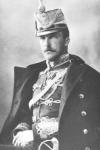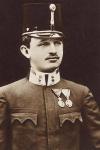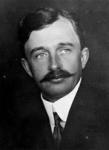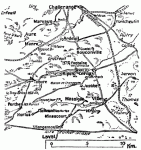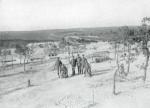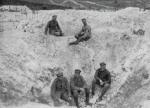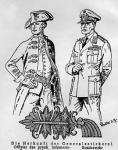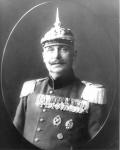-
Posts
4,312 -
Joined
-
Last visited
-
Days Won
4
Content Type
Profiles
Forums
Blogs
Gallery
Events
Store
Everything posted by Naxos
-

EK 1914 EK II 1914 with document for a dentist
Naxos replied to Komtur's topic in Germany: All Eras: The Iron Cross
Komtur, Ulsterman is wondering if your Dentist would have been awarded the HK (Hindenburgkreuz) f?r Nichtk?mpfer oder X (mit Schwertern) f?r Frontk?mpfer Hardy -

Luftwaffe Ribbon Bar
Naxos replied to Paul R's topic in Germany: Third Reich: State, Civil, NSDAP Awards & Decorations
Just found out that Hauptmann Dietrich was not as lucky as the other two KC holders of the Flak-Regiment. He went on board a different He111 to be flown out on January 28. 1943. The plane broke a landing gear on the runway and couldn't get of the ground. I believe Dietrich was taken prisoner at Stalingrad. Hardy -

Luftwaffe Ribbon Bar
Naxos replied to Paul R's topic in Germany: Third Reich: State, Civil, NSDAP Awards & Decorations
Paul, no Ostmedaille - since Helmut Maier was in France during the Winter of 1941. Let me say this: Flak unit with not one but three Knights Cross recipients at Stalingrad!!!! You got one killer tunic my friend Hardy -

Luftwaffe Ribbon Bar
Naxos replied to Paul R's topic in Germany: Third Reich: State, Civil, NSDAP Awards & Decorations
And here the third: The commander of 2./I Fl.Rgt.49 Hauptmann Johann Dietrich http://www.das-ritterkreuz.de/index_search...&searchword= Hardy -

Luftwaffe Ribbon Bar
Naxos replied to Paul R's topic in Germany: Third Reich: State, Civil, NSDAP Awards & Decorations
Here is another of the three lucky men flown out of Stalingrad in the last days of January 1943. Notice that he belonged to the same Battery as Helmut Maier. http://www.das-ritterkreuz.de/index_search...&searchword= -

Luftwaffe Ribbon Bar
Naxos replied to Paul R's topic in Germany: Third Reich: State, Civil, NSDAP Awards & Decorations
Here is another Knights Cross recipient of the first Battalion Flak.Rgt.49. He was flown out of Stalingrad in Jan. 1943 together with two other KC holders. He was awarded the KC for knocking out twenty-four T34 tanks in about 15 minutes with 27 rounds fired from a 8.8 cannon. http://www.das-ritterkreuz.de/index_search...chword=gem?nden -

Luftwaffe Ribbon Bar
Naxos replied to Paul R's topic in Germany: Third Reich: State, Civil, NSDAP Awards & Decorations
Paul, i have a friend working with the Red Cross in M?chen - I will ask for any info available. Maybe.....? By the way, the Officer commanding the second battery was apparently a Knight's Cross bearer. I wll try to find his name. Take care, Hardy -

Luftwaffe Ribbon Bar
Naxos replied to Paul R's topic in Germany: Third Reich: State, Civil, NSDAP Awards & Decorations
The last commanding officer of I./49 (the first battalion of the Flak-Regiment 49 was by then part of Flak-Regiment 37) was Major Gaidu?. On Jan 29. 1943 the entire battalion consisted of only 26 men, according to the diary of a surviving member of I./Flak.Rgt.49 The diary (in German) can be found on line (very heart wrenching and graphic in detail). http://ol-sbg.at/DADBUCH2.HTM "Am 29. J?nner, 6 Uhr fr?h, waren wir noch 26 Mann von der 9. Flak-Div., Reg.37, Abteilung 1/49, ohne Verpflegung, ohne Verbandsmaterial und ohne Munition. Major Gaidu? sagte: "Was wollen wir denn noch, ergeben wir uns, es wird das Beste sein!" Er gab uns jedem einzelnen die Hand und bedankte sich, da? wir so tapfer waren. Die Augen standen ihm in Tr?nen. Der Abteilungsschreiber, er war nie an der Front zu sehen, brachte mir meine Bef?rderung und Auszeichnungen, die ich sofort im Schnee vergrub." Hardy -

Luftwaffe Ribbon Bar
Naxos replied to Paul R's topic in Germany: Third Reich: State, Civil, NSDAP Awards & Decorations
webr55 is right, Helmut Maier was born around 1917. The earliest he could have been a Kanonier in the 2. Batterie of Flak-Regiment 49 would have been in early 1938. The I. Abteilung Flak-Regiment 49 was established on Oct.01 1937 in Mannheim. He would have been an Unteroffizier in 1942. Assuming Maier remained in this unit, he probably left the above tunic at home when the I.Fl.Rgt.49 was transferred from France to the Ukraine. Maier ,if not KIA (and I couldn't find a Helmut Maier out of the 31 listed on Volksbund Website fitting the above), most likley went missing in Dec 42 or Jan 43. Paul, if you know someone with a Vermisstenbildliste des Deutschen Roten Kreuzes (MIA picture registry of the German Red Cross) that incl. Flak-Regiment 49 it might be possible to find Maier's picture. A lot of the Stalingrad MIAs found in the lists of the Red Cross are not listed with the Volksbund. Hardy -

Luftwaffe Ribbon Bar
Naxos replied to Paul R's topic in Germany: Third Reich: State, Civil, NSDAP Awards & Decorations
Thanks Bill, Unteroffizier Hardy -

Luftwaffe Ribbon Bar
Naxos replied to Paul R's topic in Germany: Third Reich: State, Civil, NSDAP Awards & Decorations
Helmut Maier, 2. I. Fl.Rgt.49 belonged to the second Battery of the first Battalion of the Flak-Regiment 49 - in the summer of 1942 near Stalingrad the first battalion Fl.Rgt.49 was placed under the command of the Stab / Flak-Regiment 37. The first Battalion, Flak-Regiment 49 fought with distinction beside the 16.Panzer-Division at Stalingrad - there it was lost in the north sector of the Stalingrad cauldron (tractor factory Tschersinsky). Hardy -

Luftwaffe Ribbon Bar
Naxos replied to Paul R's topic in Germany: Third Reich: State, Civil, NSDAP Awards & Decorations
Paul, what is the rank on the shoulder boards of Helmut Maier's tunic? Regards, Hardy -
Im Lorbeer des Weltkrieges translation = In the laurel leafs of the World War Lorbeer or laurel leafs is the symbol of the victor - it is indicating that the Admirals featured were victorious in their battles. Hardy
-
Eduardo, Since two out of three are Navy personalities, I think the flags are for the great navy battles at Skagerrak (Battle of Jutland) and at the Dardanellen (Dardanelles). As well as indicating the two major allies of Austria Hardy
-
That's him Glenn, Rick is right "What an odd trio" Hardy
-
-
Rick, H?tzendorf and most of the "spare Arch Dukes" seem too old. Karl was the supreme commander for the last two years of the war, seems fitting to be in the middle. You right though, Karl looks a bit different in the Postcard. another picture:
-
I believe the Mann in the middle is the heir to the Austrian throne and Commander in Chief of the Austrian Army from Dec.1916 to Nov. 1918, Emperor Karl I. Hardy
-
-
Part III Preperations for the Raid Under the leadership of Rombach the two other lieutenants, two sergeants, six corporals and fifty-one volunteers of the I./169 battalion together with the Pionier corporal and his nine combat engineers train for ten nights on a scale model of the mission area. The training model was build by using a photograph taken by a German flyer. Special emphasis is on the method of clearing of the enemy trench - with half of the group moving inside, and the other half outside the trench on the parados (rear wall of the trench). The hand grenade throwers always moved on the parados , never on the parapet (front wall facing the enemy). Difficult proved to be the short throws of hand grenades over one or two parados' and the accurate quick firing of half the pistol magazine. The silent movement of the men in no-man's-land, was especially trained. Earlier raids started at the first trench ? after the initial artillery preparation, the raiders would run out of the trench to breach the noman's-land. This time the raiders would crawl out into no-man's land, move close to the enemy trenches and find cover in shell craters, before the artillery strike ? then immediately after the barrage they would break into the first French trench and roll it up. The pros are: - no losses crossing no-man's land - no signs of exhaustion when reaching enemy lines, hence better aim throwing grenades and firing side arms The cons are: - being detected by the enemy while moving into position - being hit by friendly fire during the artillery barrage Three days before the raid, the locations of the start-positions where practiced on the florescent compass. By taking the weather and lighting conditions in account the staring time was set to 0635 hours on December 14th 1917. too be continued...
-
Humberto, the AKO (Allerh?chste Kabinettorder) from March 22. 1900 has awarded the Stickerei (General Officer Collar patches - see image below) to all Prussian Generals. The origin of the patches dates back to 1730, then given to the the "Alt-Larisch" Prussian Infanterie Regiment 26 by Frederick the Great. W?rtemberg, Hessen and Sachsen followed the fashion for their Generals and in 1915 Bavaria as well adopted the General Officer collar patches (Bavarian General patches were silver)- however many Imperial officers of General rank wore their old Regiment uniforms. Hardy



